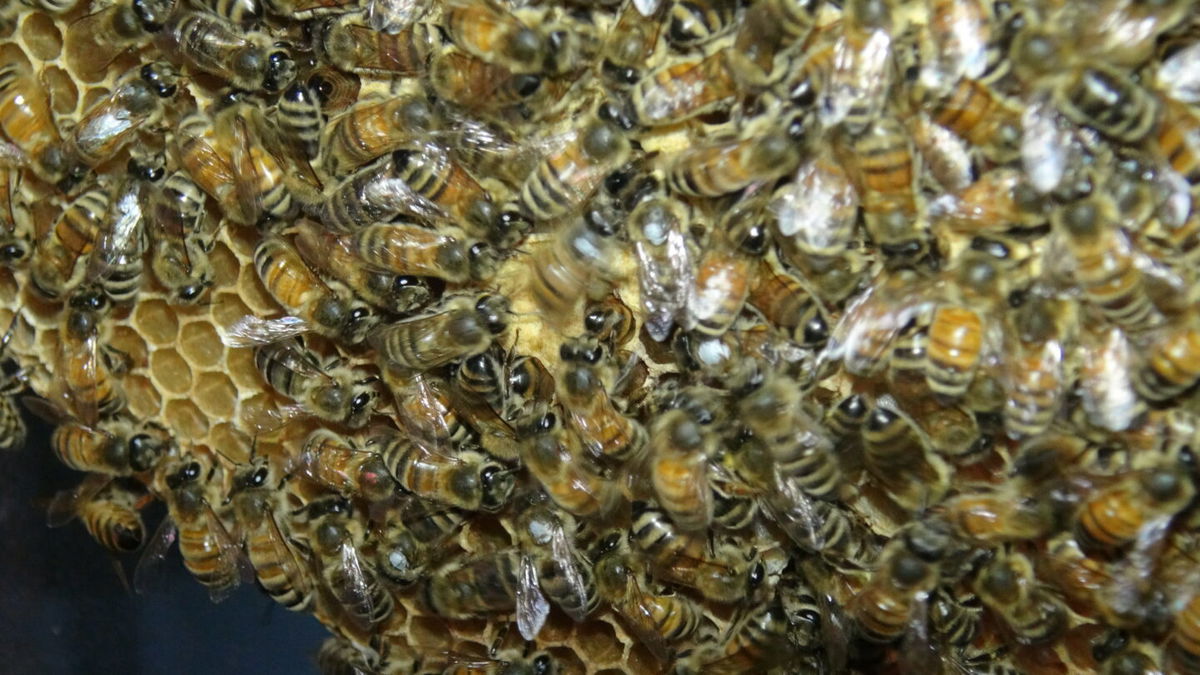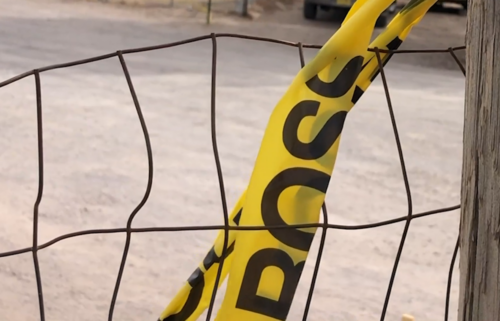Bees learn waggle dance moves with a little help from their coworkers

A honeybee (center) performs a waggle dance
By Mindy Weisberger, CNN
Booty-shaking worker bees guide their fellow workers to pollen by a form of communication known as “waggle dancing” — performing steps that map out where food is located and how far it is from the hive.
And now scientists have discovered that bees hone these moves when they’re young, by touching their antennae to the bodies of dancing elder bees; if they miss that chance, their dances have more mistakes, and their maps are less accurate.
Waggle dances are tricky to execute, and missteps can send foraging bees flying off in the wrong direction. But there’s a critical learning phase in a young worker bee’s life when she’s about 8 days old — right before she becomes a full-fledged forager — which helps her to perfect her dance.
When older workers return to the hive and waggle dance, novice workers observe them closely. By doing so, less-experienced bees learn to perform dances that generate more accurate maps to the next meal. Worker bees are all female.
Genetics play a part in bees’ dances, and earlier studies have shown that some dance details relaying distance are species-specific.
However, the new findings demonstrate that the language of bees’ dances is not entirely innate but is partly shaped by social learning, scientists reported Thursday in the journal Science.
They also found that if newbie workers were deprived of the chance to learn from more experienced bees, they produced dances that were sloppier, with more errors. Some aspects of their map-dancing improved with time, but other nuances were lost for good.
Waggle dance communication is complex, and the bees’ task is further complicated by having to perform on vertical, irregular honeycomb stages with no light, said study coauthor James Nieh, a professor of biology at the University of California, San Diego.
“As a waggle dancer, you’re running forward, rushing at about one body length per second over this open dance floor that has holes in it,” Nieh said.
“You’re surrounded by hundreds and thousands of bees that you have to push out of the way, and it’s in complete darkness.” Bees in the colony follow the dance through physical contact with the dancer, he added.
Despite the challenges, a bee has to use her body to convey lots of information subtly. A dancer follows a straight line, called a “waggle run,” then loops back to the starting point in alternating left and right curves; she does this repeatedly, making a figure-eight shape. Duration of the waggle run tells her hive mates how far away the food is, and the waggle run’s angle relative to the central line points the direction to the food source.
What would happen if young bees didn’t have the chance to watch others dance? To find out, the researchers created five colonies where all the bees were the same age, with no experienced elders. When the bees were old enough to forage, the study authors recorded their dances and then compared them with dances of bees in five control colonies containing adults of different ages.
“They could all dance,” Nieh said. “But bees that could follow more experienced dancers — the teachers — danced a lot better.”
In their earliest dances, the bees that had no guidance performed dances with more mistakes in their direction angles and in the distance encoding communicated by the vertical waggle run.
By the time the bees were 20 days old and fully mature, experienced foragers, their performances had improved — up to a point. Their dances were more orderly, with fewer directional errors. “However, they could never correctly communicate distance,” Nieh said. Once those mistakes were encoded in the dance, the teacherless bees repeated the errors for the rest of their lives.
“What amazed me most is that this represents a new level of complexity in the transmission of information within a bee colony,” bee researcher Paul Siefert, who was not involved in the study, told CNN in an email.
“While we previously thought that the waggle dance was at best defined by genetics and mechanical capabilities, we now know that there is a social component to learning the dance,” said Siefert, a research associate at the Institut für Bienenkunde Oberursel of the Polytechnische Gesellschaft, Goethe University Frankfurt in Germany.
The findings also raise questions about the role that social learning may play in other interactions within a honeybee colony, “for instance, in hygienic behavior against Varroa mites,” a parasite that targets honeybees, Siefert added.
Another question that scientists are hoping to answer is if social learning could shape changes in a colony’s waggle dance, so that updates about shifts in their ecosystem could then be relayed to younger bees through their elders’ waggles, Nieh said.
“We would see how rapidly they could adapt to that local circumstance and pass that information on, really testing this hypothesis that distance encoding reflects the habitat.”
The-CNN-Wire
™ & © 2023 Cable News Network, Inc., a Warner Bros. Discovery Company. All rights reserved.


